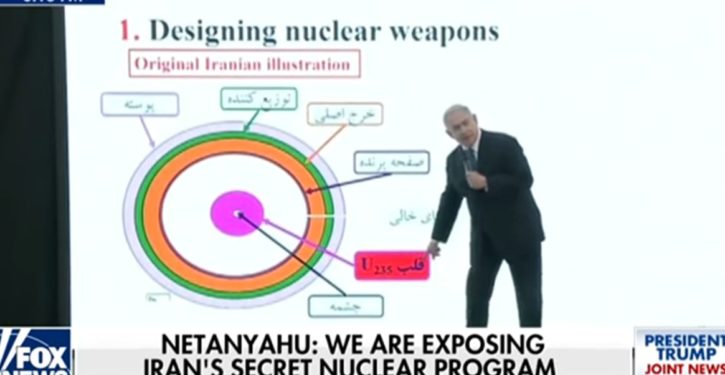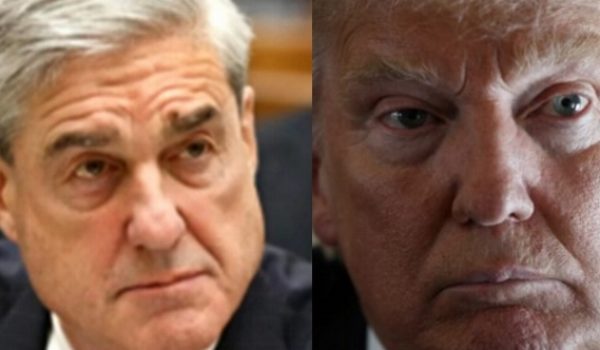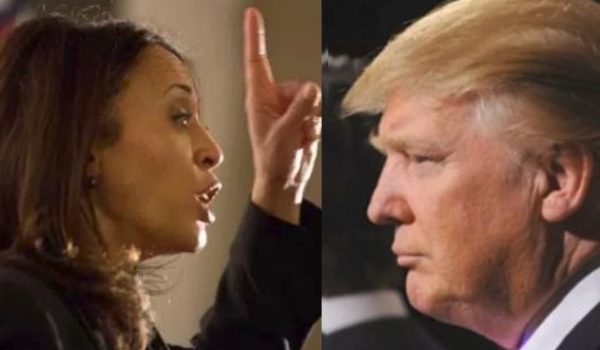
It’s easy to get a bit mesmerized with the intelligence coup the Israelis have achieved by obtaining the information Prime Minister Benjamin Netanyahu briefed on Monday 30 April 2018. (The video presentation is below.)
It really is pretty amazing, to think that Israeli agents were able to get hold of over 100,000 documents stored by the Iranians on their secret nuclear weapons program. According to Netanyahu, the Iranians moved their extensive documentation into an unprepossessing building in Tehran, sometime after breaking their program up in 2003, renaming it, and going to great lengths to hide it and continue it furtively.
That Israel found the Iranian documentation anyway, and was able to abstract it, certainly merits at least a golf clap from intelligence professionals the world over.
Will this presidential election be the most important in American history?
But I want to focus on a couple of points with immediate relevance for President Trump’s JCPOA (Joint Comprehensive Plan of action) decision deadline on 12 May.
To paint the picture briefly, Israel has just produced documentation that validates what has long been suspected: that Iran was pursuing a nuclear weapons program. There is no explanation for the documents revealed – which U.S. experts have authenticated – other than that they are about a nuclear weapons program.
Joe Klein at FrontPage summarizes:
The “atomic archive” documents reportedly reveal details about a hush-hush nuclear weapons plan known as Project Amad that began back in the early 1990’s. It was supposedly shut down in 2003, but, in actuality, the project work was carried on under different guises with the same Iranian scientists involved. The work has focused on what the prime minister said were five elements. As described by the Times of Israel, these elements consisted of “designing nuclear weapons, developing nuclear cores, building nuclear implosion systems, preparing nuclear tests and integrating nuclear warheads on missiles.”
These are unquestionably the elements of a nuclear weapons program.
There’s been a chorus of Sudden We-Keemosabes on Monday proclaiming that we already knew all the things Netanyahu’s brief highlighted, and knew them when the JCPOA was announced in 2015. The purpose of this theme seems to be diminishing the impact of the Israeli intelligence.
But what it actually does is completely undermine the argument for continuing with the existing JCPOA.
The big under-rug sweep
It does that from two perspectives. The first is the easiest to see. Yes, we did have reason to believe that Iran indeed had a nuclear weapons program. A major problem with the JCPOA is that implementing it was supposed to be contingent on resolving the ambiguities about the intelligence we had at the time – which was much less extensive than what Israel has now obtained.
Those ambiguities were not resolved, however. During the implementation process, they were simply swept under the rug. It’s not just that they were swept under the rug either, although that’s a significant problem for confidence in the bona fides of the JCPOA going forward.
It’s that we had no means, in the JCPOA framework, of doing anything about the unresolved ambiguities other than sweeping them under the rug. The JCPOA was set up and executed that way.
As a reminder of how the ambiguities were swept under the rug, here is the analysis of the Institute for Science and International Security (the “Good ISIS,” or the Institute) published after the UN watchdog, IAEA, put out its final statement on whether Iran had come clean about previous nuclear-weapons work. The “come clean” requirement was a step in the implementation process. Iran didn’t do it – come clean – but IAEA and the UN member states let Iran get away with that.
Iran did not provide the IAEA with anywhere near a full declaration about its past nuclear weapons related activities, and it did not provide the kind of transparency and cooperation required for the IAEA to conclude its investigation. The IAEA was unable to fully explain Iran’s nuclear weapons activities, including assessing with certainty that each activity and the program overall have ceased to exist. Most of its conclusions were based on incomplete information rather than a full Iranian declaration or cooperation.
Iran’s answers and explanations for many of the IAEA’s concerns were, at best, partial, but overall, obfuscating and stonewalling. Faced with evidence, Iran offered largely civilian or conventional (nonnuclear) military justifications for many of the outstanding issues of concern, denied the activities’ relation to nuclear weapons work, or denied the activities or evidence outright. In many cases its answers appeared contrived.
I urge you to read the whole analysis. The Good ISIS has been by no means prone to exaggeration or excitability. Its conclusion that Iran failed to cooperate, and that no basis existed for closing out the UN’s longstanding inquiry into the “possible military dimensions” (PMD) of Iran’s nuclear program, was quite categorical. (Emphasis in original.)
Iran’s cooperation was certainly not sufficient to close the overall PMD file. Consequently, the IAEA’s report can be viewed, at best, as a document that closes the process set forth by terms of the Roadmap. However, the IAEA’s investigation must continue. As Olli Heinonen, Senior Fellow at the Belfer Center at Harvard University, wrote on December 8, 2015, “…Tehran yet again failed to fulfill its obligations under Security Council resolutions demanding it ‘cooperate fully with the Agency on all outstanding issues, particularly those which gave rise to concerns about the possible military dimensions to Iran’s nuclear programme, including by providing access without delay to all sites, equipment, persons and documents requested by the Agency.’ Without Iran’s cooperation and transparency, the file simply cannot be closed.”
Again, in the concluding paragraphs at the end:
Whether Iran has actually closed down all of its nuclear weapons related activities, let alone dismantled and destroyed all aspects of that work, is uncertain given its poor level of cooperation with the IAEA, including the absence of any admission of its past efforts and denial of the facts and findings in the report.
The Good ISIS included this discouraging graphic in its analysis:

What we couldn’t verify in 2015 is still unverifiable
Running through the above commentary is the second perspective from which the JCPOA is undermined. It’s not just that “we Keemosabes” had to ignore the evidence and let Iran get away with stonewalling us in 2015. It’s that we had no means of looking around that stone wall and getting to the truth – and we still don’t.
The JCPOA has given us nothing – absolutely nothing – that helps us verify whether Iran has an active nuclear weapons program even now.
You don’t find out if Iran has a nuclear weapons program by checking on the output of enrichment centrifuges. Doing that can give you hints one way or another, but it’s not definitive, and never will be. The only way to verify that Iran doesn’t have a nuclear weapons program – an active one; one that can be restarted quickly – is to inspect the sites where weapons-related work occurs.
The JCPOA doesn’t give UN inspectors access to those sites. It includes a provision that access, to the rigorous level necessary for verifying compliance, can be requested. But it’s up to Iran whether it will be allowed or not.
Iran hasn’t allowed such access as an element of JCPOA “cooperation.” Iran didn’t allow it before the JCPOA implementation process, didn’t allow it during the implementation process, and hasn’t allowed it since the JCPOA was formally implemented on 17 January 2016.
In spite of that lack of access, and the lack of verification inherent in its absence, the P5+1 group accepted the magic hand-wave over Iran’s nuclear weapons program in 2015, and moved forward to roll back sanctions and proceed on a basis no more verifiable or intrusive than what we had before 2015.
Remarkably, in September 2017, the head of IAEA, Yukiya Amano, complained that he had no criteria by which to monitor what Iran was doing to develop a nuclear warhead.
Here is Amano’s plea (ellipses in original):
“Our tools are limited,” Amano told Reuters when asked if his agency had the means to verify Section T.
“In other sections, for example, Iran has committed to submit declarations, place their activities under safeguards or ensure access by us. But in Section T I don’t see any (such commitment).”
Amano said he hoped the parties to the agreement would discuss the issue in the Joint Commission, a forum created by the deal, adding that even a clearer definition of terms such as the technology referred to would be an improvement.
“More clarification would be helpful … Russia has a different view. They believe that it is not the mandate of the IAEA. Others have different views and discussions are ongoing.”
So, to be clear, there is no resolution to how or whether one of the three program elements of a nuclear weapons capability will be monitored under the JCPOA.
Section T of the JCPOA is about developing a nuclear warhead.
1. ACTIVITIES WHICH COULD CONTRIBUTE TO THE DESIGN AND DEVELOPMENT OF A NUCLEAR EXPLOSIVE DEVICE
2. Iran will not engage in the following activities which could contribute to the development of a nuclear explosive device:
82.1. Designing, developing, acquiring, or using computer models to simulate nuclear explosive devices.
82.2. Designing, developing, fabricating, acquiring, or using multi-point explosive detonation systems suitable for a nuclear explosive device, unless approved by the Joint Commission for non-nuclear purposes and subject to monitoring.
82.3. Designing, developing, fabricating, acquiring, or using explosive diagnostic systems (streak cameras, framing cameras and flash x-ray cameras) suitable for the development of a nuclear explosive device, unless approved by the Joint Commission for non-nuclear purposes and subject to monitoring.
82.4. Designing, developing, fabricating, acquiring, or using explosively driven neutron sources or specialized materials for explosively driven neutron sources.
Amano says he doesn’t have the tools to monitor the factors it lists, and Russia (one of the P5+1 partners) doesn’t believe such monitoring is the mandate of the IAEA. Even the potential for such monitoring – let alone actual monitoring – is dead in the water.
The JCPOA is flawed across the board
This melancholy disclosure came after we learned, in 2016, that formal reports on IAEA inspections – which, remember, are of non-weapons-related facilities to begin with – would contain less information under the new JCPOA-based UN Resolution 2231 than they had under the old inspection regime. So not only does the IAEA not have guidelines or an acknowledged mandate to inspect weapons-related sites, but it’s telling UN member states less now about what it finds at the uranium-processing sites.
This is not a useful agreement. Nothing about it will reliably, verifiably prevent Iran from developing nuclear weapons. There is no provision of it that can be pointed to as having that verifiable effect.
The issue is not whether someone has developed proof that Iran is actively constructing or testing a nuclear warhead. The issue is that the JCPOA is not an instrument that can verify that for us. The “deal” doesn’t do what we need a deal for.
The JCPOA contains provisions for dispute resolution, and I wrote in October that that would be one way to move ahead on this:
As I pointed out last week, the revelation from Amano in September indicates a way ahead. The U.S. should pursue a dispute resolution under the JCPOA on the matter of monitoring nuclear warhead development, for which the JCPOA’s “Section T” contains the relevant criteria and performance factors.
Others urge simply withdrawing the U.S. from the JCPOA – and a case can be made for that too. Senator Ted Cruz (R-TX) has been leading the charge to make the coherent case for withdrawal (including pointing out the JCPOA provision that requires participants to actively cooperate with Iran in securing the country’s nuclear sites, and demanding information on secret agreements related to that provision).
The Iran deal placed Iran’s nuclear program under international sponsorship and put us in the unsustainable position of having to defend that program. There is no fix for this. @POTUS should withdraw from this disastrous deal.
— Senator Ted Cruz (@SenTedCruz) April 27, 2018
That’s important work, as Trump will need backstopping from the Senate and political momentum for getting us off top dead center. One key thing it does is signal to Iran (and the P5+1 group) that Trump will have domestic support for summary action.
Trump is playing his cards close to the vest, as usual, but Cruz is shaping an essential public dialogue on the broad outline of how to unload the JCPOA – which functions to restrain not Iran, but the rest of us.
The picture of a JCPOA that restrains Iran from developing nuclear weapons is a fiction. The main thing we need to do is stop believing without evidence that the JCPOA is doing what it has no power to do. It’s not.
The real mental impact of what Netanyahu outlined on Monday should start with that. The Israeli intelligence “get” has given us the best trove of information we’ve ever had on Iran’s nuclear weapons program. What we discover as that trove is mined will be the sum total of our reliable knowledge base – because the JCPOA, as-is, gives us nothing that can update or supersede it.





